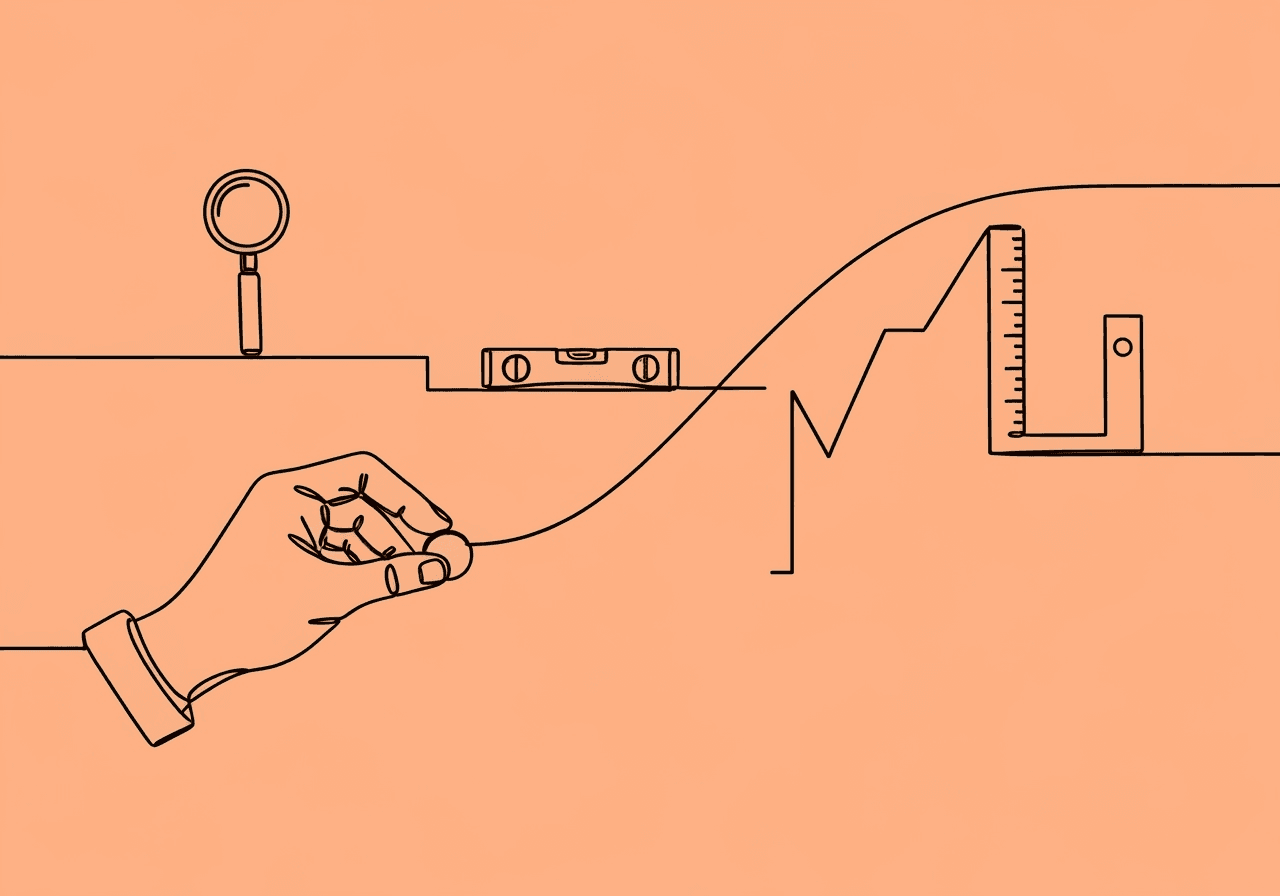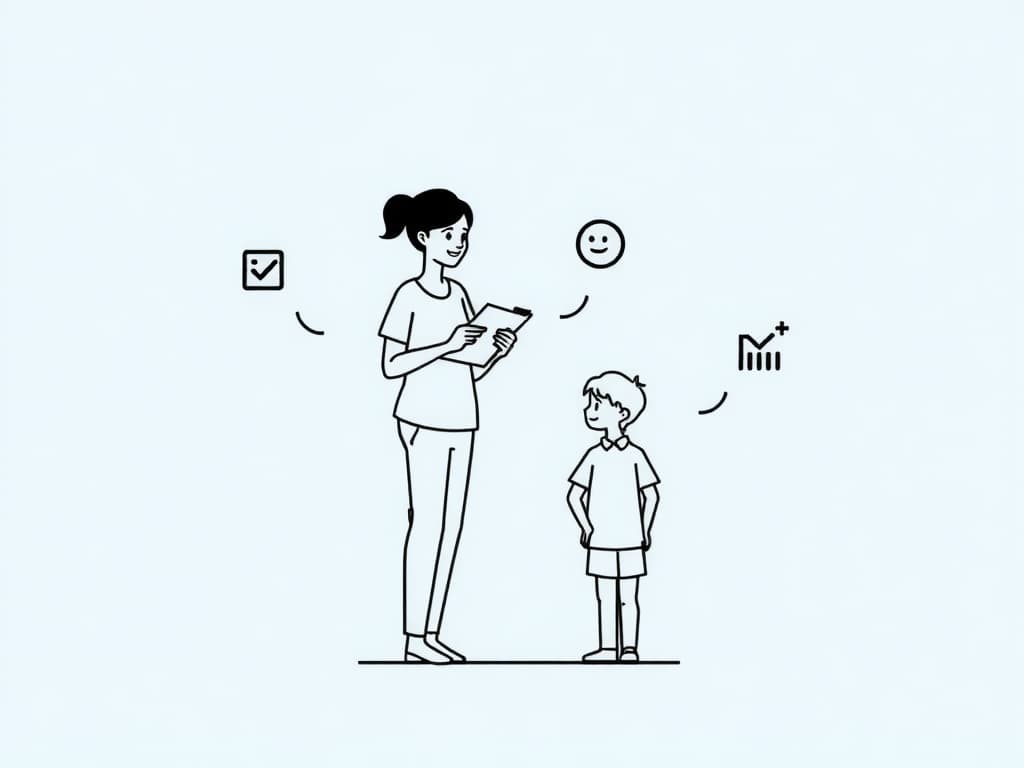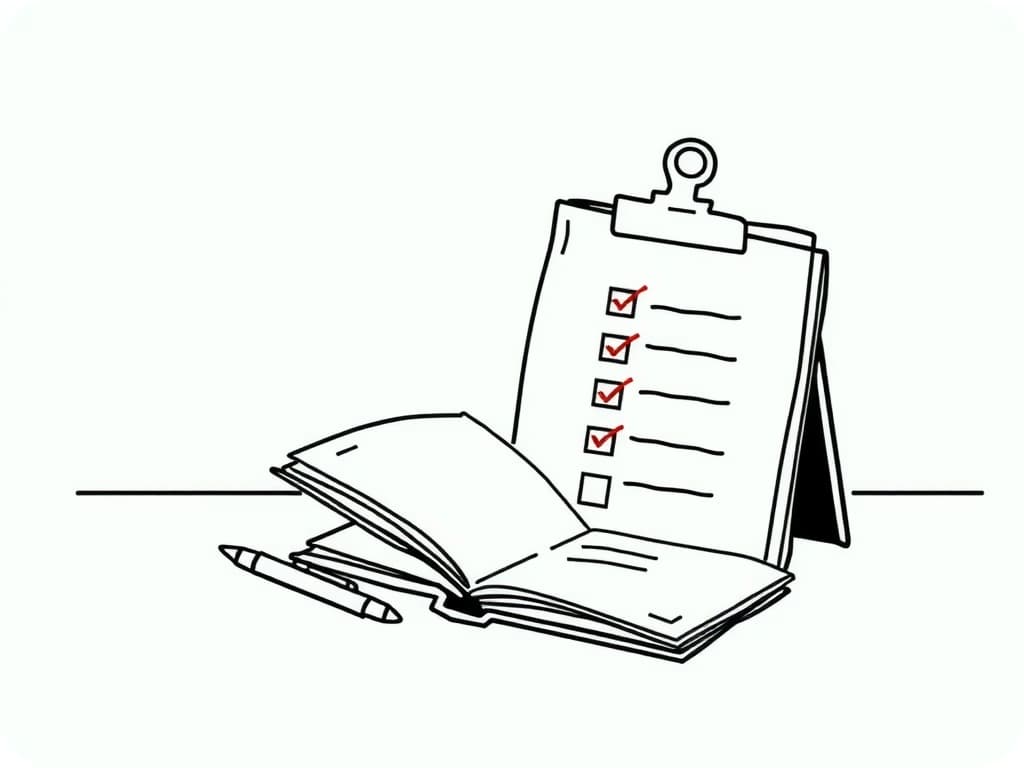RBT Visual Analysis Documentation: Step-by-Step Guide

RBT Visual Analysis Documentation: Step-by-Step Guide
Imagine ending a therapy session and looking at data points on a graph. These points can reveal key insights into a client's progress. Or they might leave you unsure about the interventions used that day. For Registered Behavior Technicians (RBTs), RBT visual analysis documentation forms the core of effective Applied Behavior Analysis (ABA). It turns raw observations into clear evidence that supports behavior change. This work also helps meet ethical standards and allows you to help clients with more accuracy.
Let me walk you through the basics of visual analysis. We'll cover these main areas:
- Key ideas like trend, level, and variability in graphing behavior data.
- Steps to build ABA line graphs.
- Ways to read different trend patterns.
- Tips to record level and variability well.
- How to add visual analysis to session notes.
- A checklist for BCBA audits.
Mastering these skills will improve your documentation. It will lead to stronger results for clients.
What Are Trend, Level, and Variability in RBT Visual Analysis Documentation?
Visual analysis sits at the center of ABA data review. It lets RBTs spot patterns without heavy stats. The Behavior Analyst Certification Board (BACB) says RBTs must enter data and update graphs. This falls under core duties in Task List A-5. Focus on three main parts: trend, level, and variability.
Trend shows the general direction of behavior over time. For example, does it go up or down? Level means the average height of data points in a phase. It helps spot shifts from baseline to intervention. Variability looks at how spread out the data is. This tells if responses stay steady.
These parts help RBTs check if interventions work through visuals. Say a level stays steady with little variability. That points to solid progress. The BACB calls for clear records to back these reviews. Graphs must show real behavior shifts.
Many RBTs plot daily session data first. This helps catch patterns soon. It fits ABA's single-subject design rules. Visual checks guide choices there.
How Do You Set Up an ABA Line Graph Step by Step?
Building a solid ABA line graph is key for RBT graph analysis. It gives a sharp view of behavior over sessions. Start with good data collection. Track things like frequency or duration.
Organize data in a spreadsheet. Put sessions or dates in one column for the x-axis. Add behavior measures in another for the y-axis. For manding frequency, list sessions 1 to 10 with counts.
Then, make a line graph with markers. Google Sheets or Excel make it easy. Highlight data, go to "Insert Chart," and pick line. Label x-axis "Session Number" and y-axis "Frequency of Behavior."
Add phase lines for changes, like from baseline to intervention. Draw a vertical line at the switch. ABA resources say make these lines stand out. They mark conditions clearly.
Wrap up by formatting for ease. Skip gridlines if they crowd. Add a title like "Manding Frequency Across Phases." Fit scales to the data. Standard ABA protocols make documenting visual analysis simple and pro-level.
How Do You Analyze Trends in RBT Graphs?
Trends show behavior's path. They help check if interventions succeed. In RBT visual analysis documentation, look for accelerating trends. Data rises steadily here. It often means skills build with prompts.
Decelerating trends slope down. They're great for cutting problem behaviors like tantrums. Zero-crescendo trends stay flat at zero. This fits extinction steps with no events. Zero-decelerating trends drop to zero after starting active. Fading supports often see this.
To check, imagine a line through data in each phase. If it angles up steady, record "accelerating trend." The ABA Study Guide notes to review at least three points per phase. This builds trust in reads.
Compare trends between phases in practice. A drop after intervention against a flat baseline shows it works. Record these facts to update your BCBA. Have you ever missed a subtle slope? Spotting them early avoids that pitfall.
How Do You Document Level and Variability Well?
Level and variability add layers to graphs past direction. Level is the average spot of points. Use mean or median for exactness. Take five sessions at 2, 3, 4, 2, and 3 frequencies. Mean level hits 2.8.
When documenting visual analysis, flag level shifts between phases. Say, "level rose from baseline mean of 1.2 to intervention mean of 4.5." This measures effect without extra hassle.
Variability checks steadiness. Tight clusters mean predictable patterns. Wide scatters show surprises. Low variability backs steady interventions. High might mean outside factors, like noise.
Stick to visual hints over range or standard deviation. The BACB favors this. Note "low variability in intervention (range: 3-5)" for proof. ABA practices keep analysis grounded and useful. Common mistake? Overlooking scatter—it can hide real issues.
How Do You Write Session Notes with Visual Analysis Summaries?
Session notes connect graphs to team choices. They make RBT graph analysis real for everyone. Begin with facts: date, length, targets, and steps taken.
Tie session to graph shifts. "Visual analysis shows decelerating trend in compliance errors after verbal prompts. Today's session added two points in low variability." This links your work to big picture.
Use a SOAP setup for ABA: Subjective, Objective, Assessment, Plan. In assessment, sum up: "Level held at median 80% accuracy. Keep current prompting steps."
Stay measurable and neutral. Skip guesses like "client looked motivated." ABA providers stress quantifiable graph ties. Add phase notes for BCBA ease.
Finish with next actions. This supports ongoing RBT visual analysis documentation. It meets rules and boosts how well interventions stick. Short notes save time but pack value—try it next session.
For more on RBT training, check our guide to ABA data collection.
Checklist for Auditing Your RBT Graph Analysis Documentation
BCBAs use audits to check accuracy in documenting visual analysis. Self-audit with this list before turning in work.
- Data Entry: All sessions plotted right with dates and values? Match to source sheets.
- Graph Elements: Axes labeled? Phase lines there and correct? Title clear?
- Visual Analysis: Trends, levels, variability noted fact-based? Use "accelerating" only if data fits.
- Session Notes Integration: Notes call out graph details, like "mean level 3.2"?
- Compliance: Neutral words? No opinions? Matches BACB Task List A-5?
Check for full coverage: three points minimum per phase, scales fair (no tricks). Fix issues with your supervisor.
ABA fieldwork guidelines push regular checks. They build trust and skill. See our RBT certification tips for related advice.
Frequently Asked Questions
What Key Elements Go in RBT Session Notes for Visual Analysis?
Include client details, date, time, behaviors with numbers, steps used, and graph summaries like trends or levels. ABA rules call for objective ties to goals. For example, "frequency dropped to 2 occurrences." This aids tracking and team use.
How Do You Interpret Trends, Variability, and Level in ABA Line Graphs?
Look at data path for trends: up for accelerating, down for decelerating. Level is average point height; compare means across phases. Variability measures spread—tight for low, wide for high. Learning Behavior Analysis resources say check three points per phase. This gauges intervention impact well.
The WWC Single-Case Design backs this for reliable views.
What Are Best Practices for Creating ABA Graphs as an RBT?
Organize data in sheets, pick line graphs with markers, label axes (time on x, behavior on y), add phase lines. Keep it clean, no mess. ABA graphing tutorials advise this. Use Excel or Sheets; check scales match data to stay true.
How Can You Use Visual Analysis Effectively in ABA Session Notes?
Note graph specifics: "decelerating trend after prompt fade, level from 5 to 2." Draw from trend, level, variability to back steps. ABA templates push number-based graph links. This joins daily notes to progress plans.
What Is the Purpose of Graphing Data in RBT Practice?
Graphs show behavior over time via trends, levels, variability. They fit ABA single-subject work. RBTs and BCBAs spot good strategies. The BACB Ethics Code requires accurate graphs for ethical, evidence-based care. They flag progress or tweaks.
For visual analysis protocols, see this peer-reviewed source.
What Common Mistakes Should RBTs Avoid in Graph Analysis Documentation?
Skip subjective words, bad phase marks, or skewed scales. Don't skip variability—wide spread might mean errors. BACB pushes fair plotting. Always match raw data to avoid trend or level slips.
RBT visual analysis documentation turns ABA data into real client wins. Focus on trend, level, and variability with clear graphs and notes. You follow BACB ethics and sharpen interventions. Pro resources show this cuts mistakes and aids teams.
Try it now: Check your latest graph. Find a mean level and trend note for next session. Add a phase line in a sheet. Get BCBA input weekly. These build skill for strong ABA work.
(Word count: 1327)
Popular in ABA Session Notes & Tools
- 1
RBT Supervision Documentation: 2025 BACB Guide & Templates
1,8779 min read - 2
Master ABA Medical Necessity Documentation: Avoid Denials
8949 min read - 3
Master ABA SOAP Notes: Guide for RBTs & BCBAs
8169 min read - 4
ABA Documentation Best Practices for RBTs: Essential Tips
8165 min read - 5
Guide to ABA Progress Reports for Insurance Reauthorization
6388 min read
Popular in ABA Session Notes & Tools
- 1
RBT Supervision Documentation: 2025 BACB Guide & Templates
1,8779 min read - 2
Master ABA Medical Necessity Documentation: Avoid Denials
8949 min read - 3
Master ABA SOAP Notes: Guide for RBTs & BCBAs
8169 min read - 4
ABA Documentation Best Practices for RBTs: Essential Tips
8165 min read - 5
Guide to ABA Progress Reports for Insurance Reauthorization
6388 min read
Related Resources
Explore more helpful content on similar topics

BIP Documentation RBT: Step-by-Step Guide for Accurate Notes
Learn essential BIP documentation RBT strategies for ABA therapy. Master behavior intervention plan notes, BACB-compliant templates, and common pitfalls to boost client progress and compliance. Discover step-by-step guides now!

RBT Supervision Documentation: 2025 Compliance Guide
Master RBT supervision documentation with this step-by-step guide to compliant notes. Learn BACB requirements, key elements for supervision notes ABA, and prep for 2026 changes to stay certified and excel in ABA.

Rate vs. Percentage of Occurrence: A BCBA's Guide to Choosing the Right Measurement for Documentation
Navigate rate vs percentage of occurrence in ABA with this BCBA guide. Learn to choose the right measurement for skill acquisition, behavior reduction, and compliant documentation to avoid audit pitfalls.